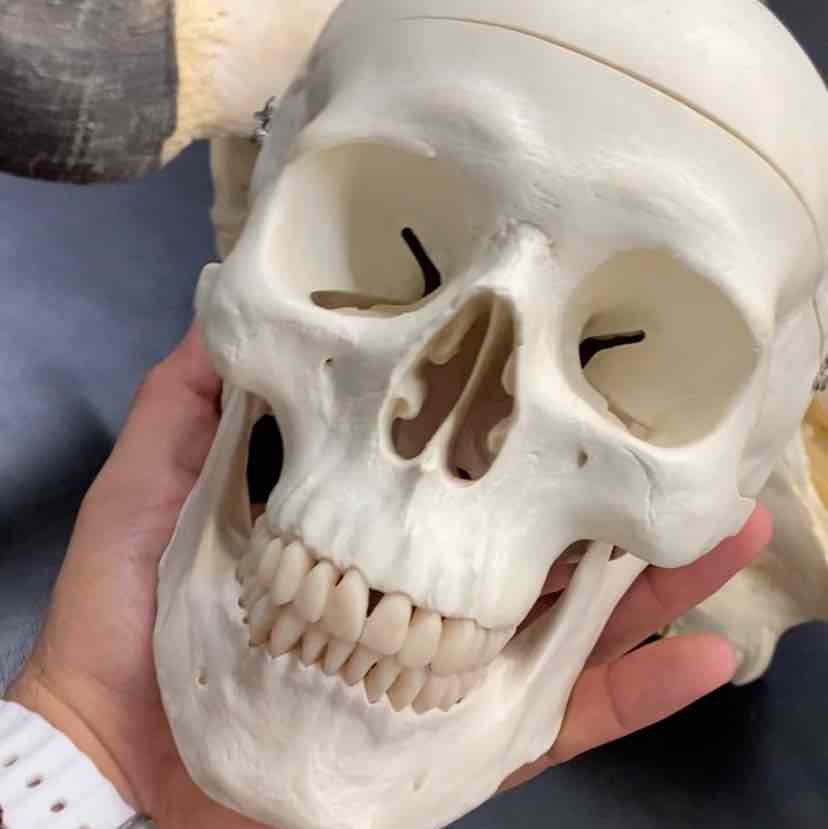ECCB 302 Mammals Lab
1/26
There's no tags or description
Looks like no tags are added yet.
Name | Mastery | Learn | Test | Matching | Spaced |
|---|
No study sessions yet.
27 Terms
Didelphis virginiana
Order- Didelphimorphia
fam- Didelphidae
Metatheria- Marsupial.
Opossums are small to med body size. all have five toes on each foot. the tail is long scaly and prehensible. they have relatively long rostrums, a small braincase, and often, a prominent sagittal crest. posses a well dev pouch and simple stomachs. omnivorous primarily found in prairies, marshes, and farmlands. terrestial and partially arboreal. nocturnal and generally solitary. notinteractic with conspecifics exept to reproduce.
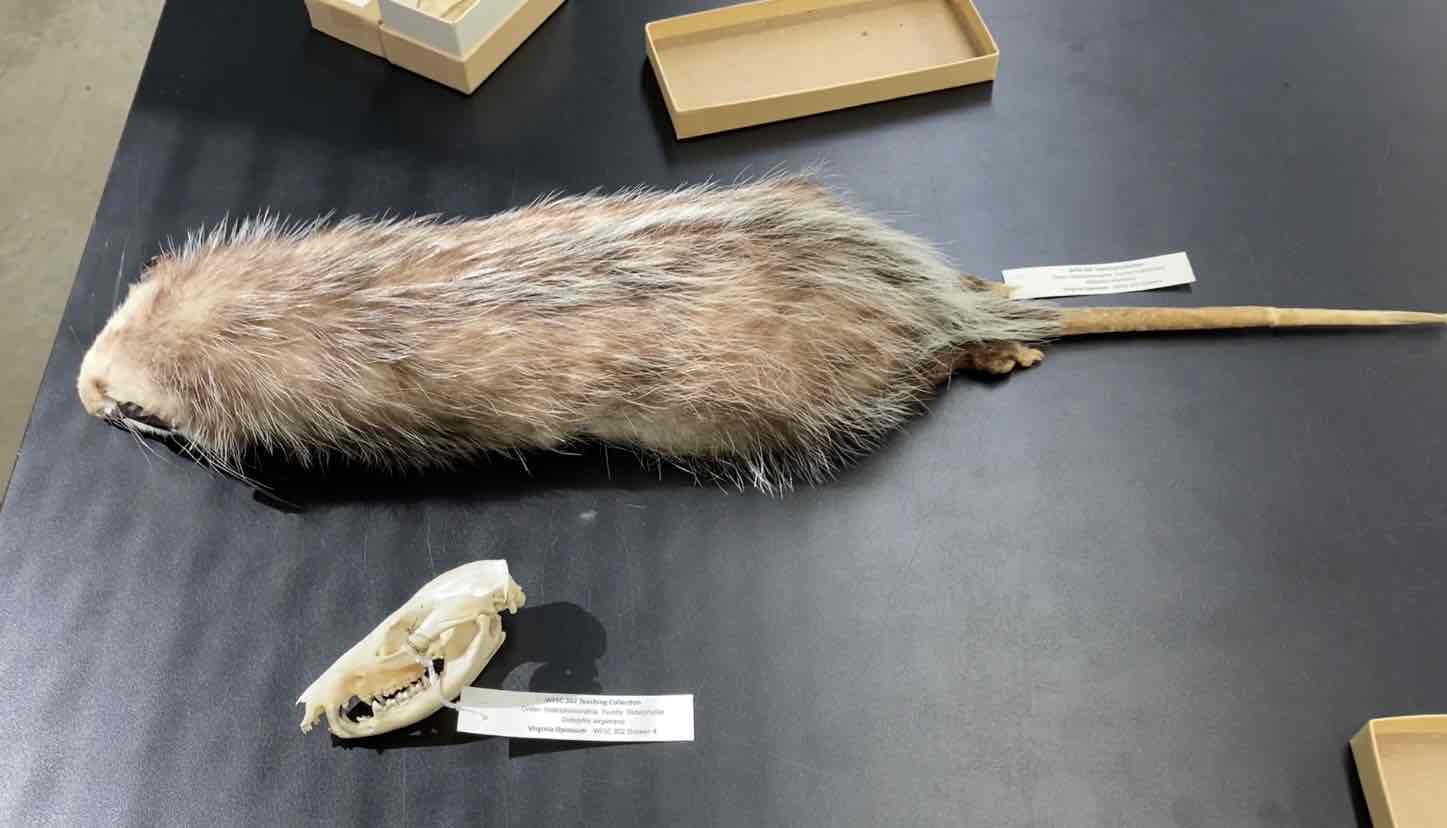
Blarina carolinensis
Order- Eulipotyphla
Fam- Soricidae
small but robust with short legs and a short tail. fur dense and soft, nearly conceals short external ears. skull is long and narrow, usually with a flat profile. primarily insectivores. sharp pointy teeth and can poison from glands near the teeth. eyes are tiny and their main senses are probably touch hearing and smell.
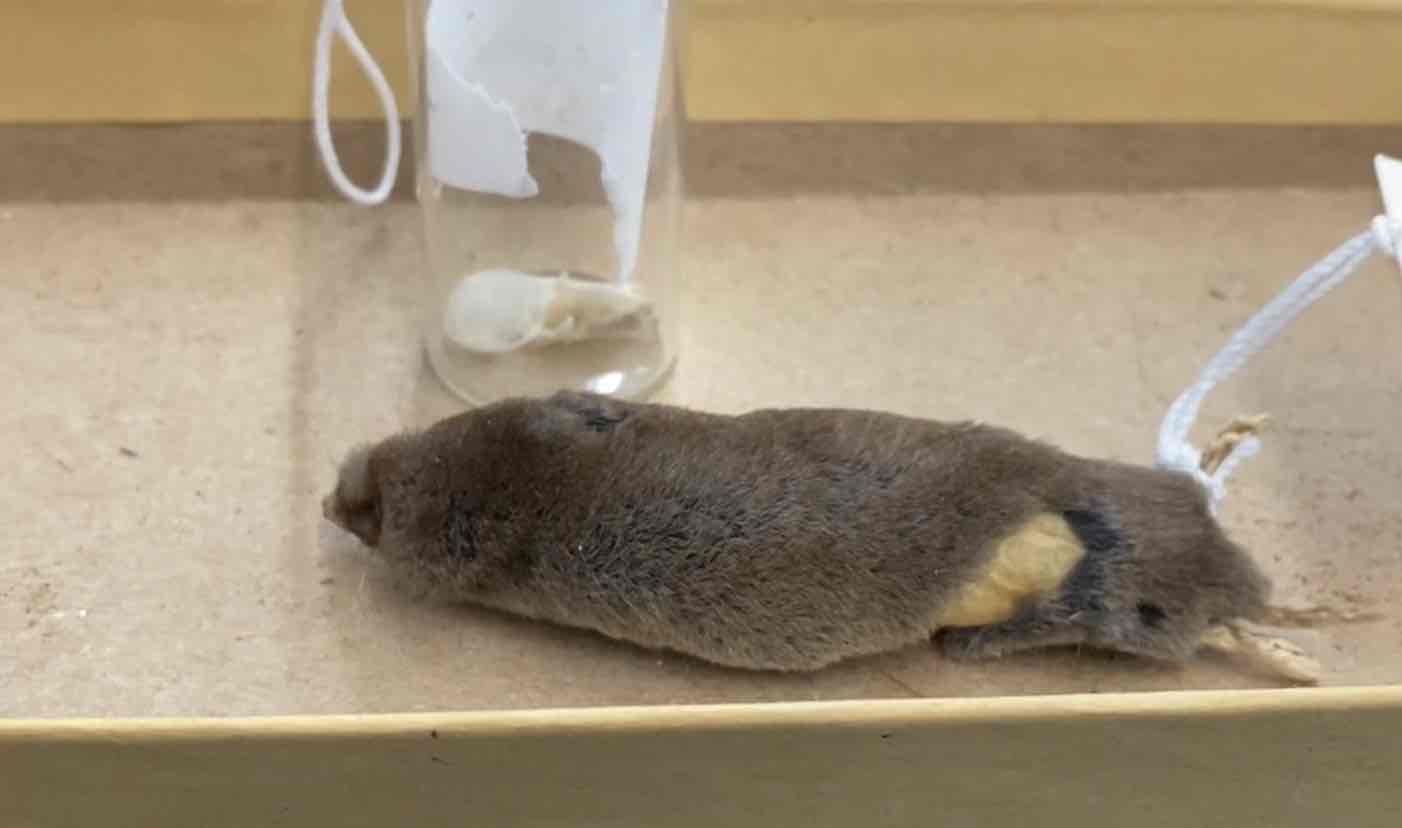
Scalopus aquaticus
Order- Eulipotyphla
fam- Talpidae
relatively small and burrowing mammal, possesing shovel like feet. body form tubular. fur very dense and no visible eyes or ears. flat skull with long narrow rostrum. teeth pointy, feed on inverts.
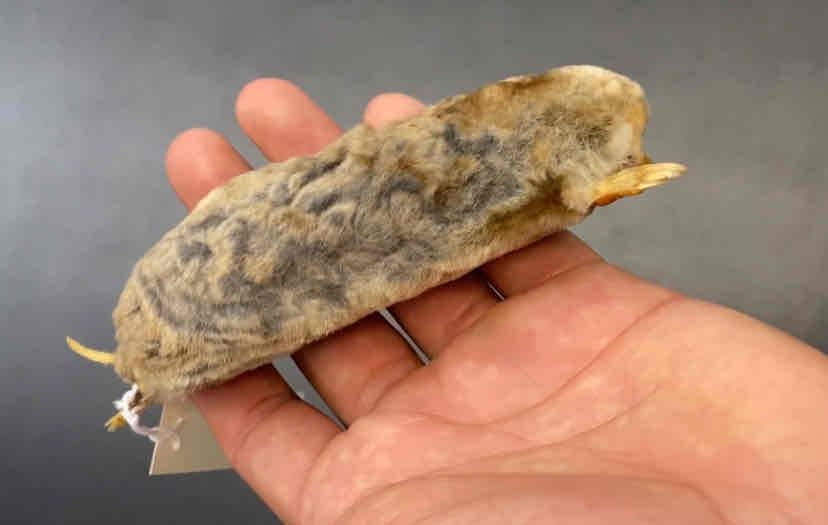
Antrozous pallidus
Order- Chiroptera
Fam- Vespertilionidae
Large pale colored bat. bases of hairs light tips dusky. usually with a large light spot between the shoulders. underparts pale. long ears and blunt snout. insectivores and nocturnal
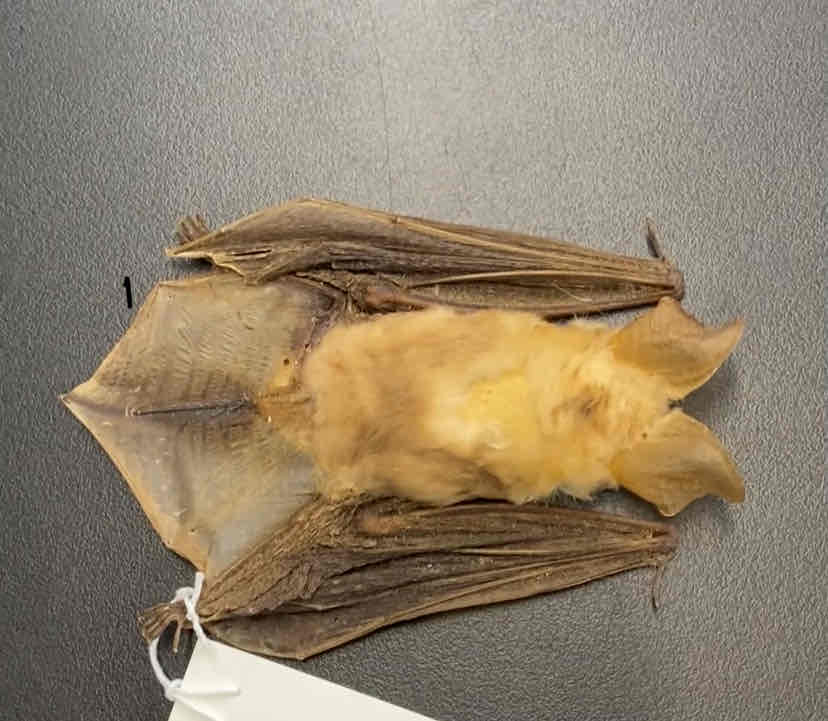
Corynorhinus townsendii
Order- Chiroptera
Fam- Vespertilionidae
Looks like Antrozous pallidus but darker
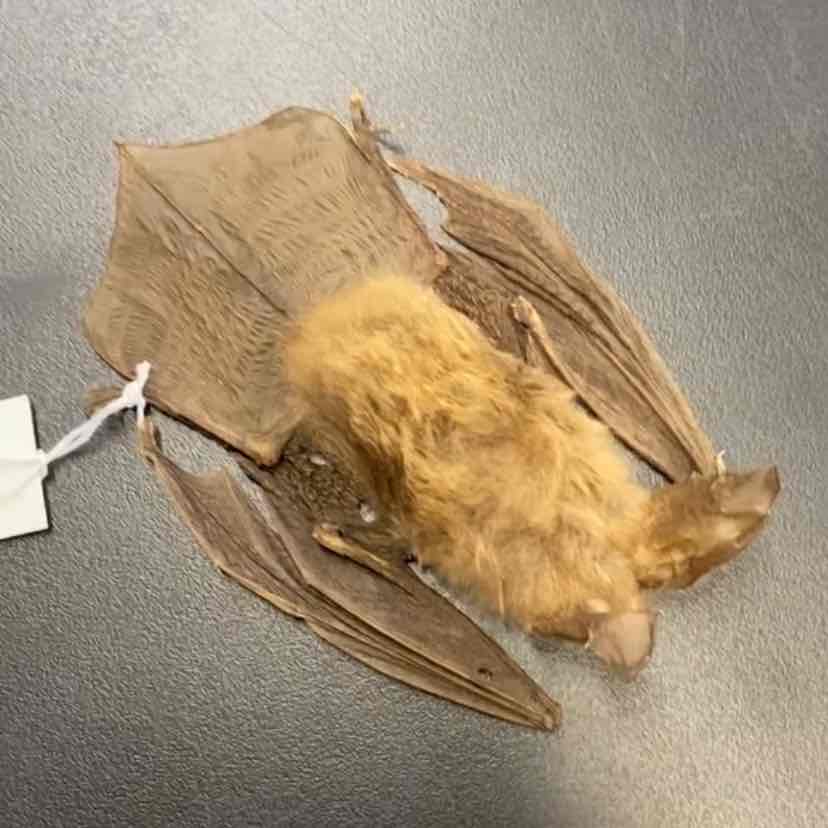
Lasiurus borealis
Order- Chiroptera
Fam- Vespertilionidae
the eastern red bat has distinctive fur, with males being brick or rusty red and females being a slightly more frosted shade of red. both sexes have distinctive shoulder patches of white fur. insectivores that feed primarily on moths.
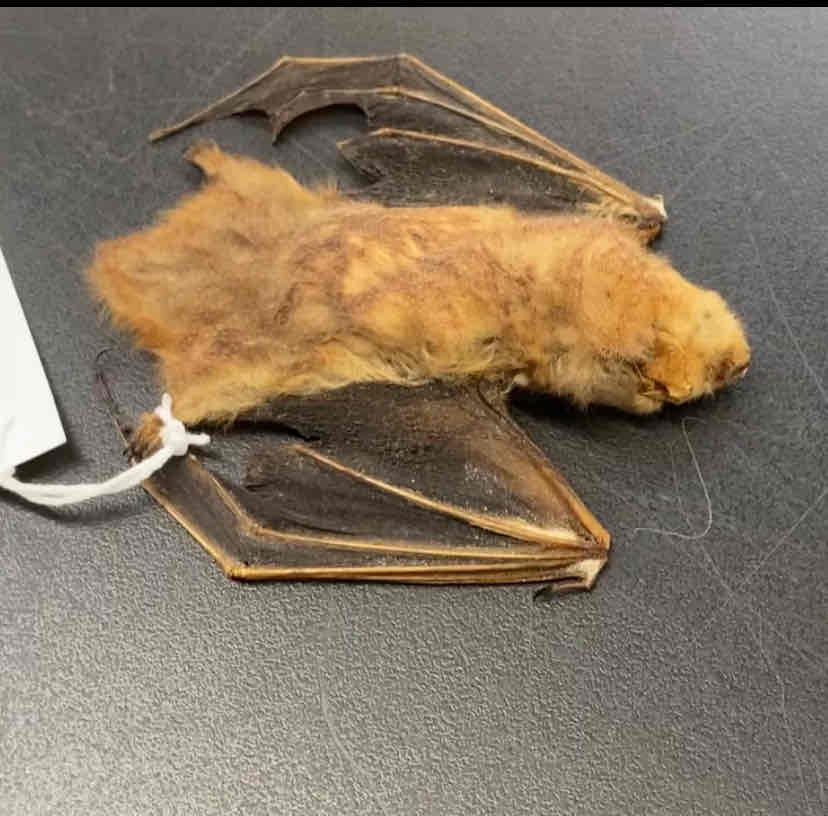
Dasypus novemcinctus
order- Cingulata
fam- Dasypodidae
defined by their shell. consists of bony structures covered with thin keratinous plates. scutes cover most of the dorsal surface on body and are interupted by 9 bands of flexible skin. the belly is soft and unprotected by bone. the limbs have irregular horny plates covering at least parts of their surfaces. the top of the head is also covered by a shield of keratin covered scutes and the tail is covered by bony rings. about the size of a small dog.
Homodont teeth, no incissors or canines. feed primarily on inverts.
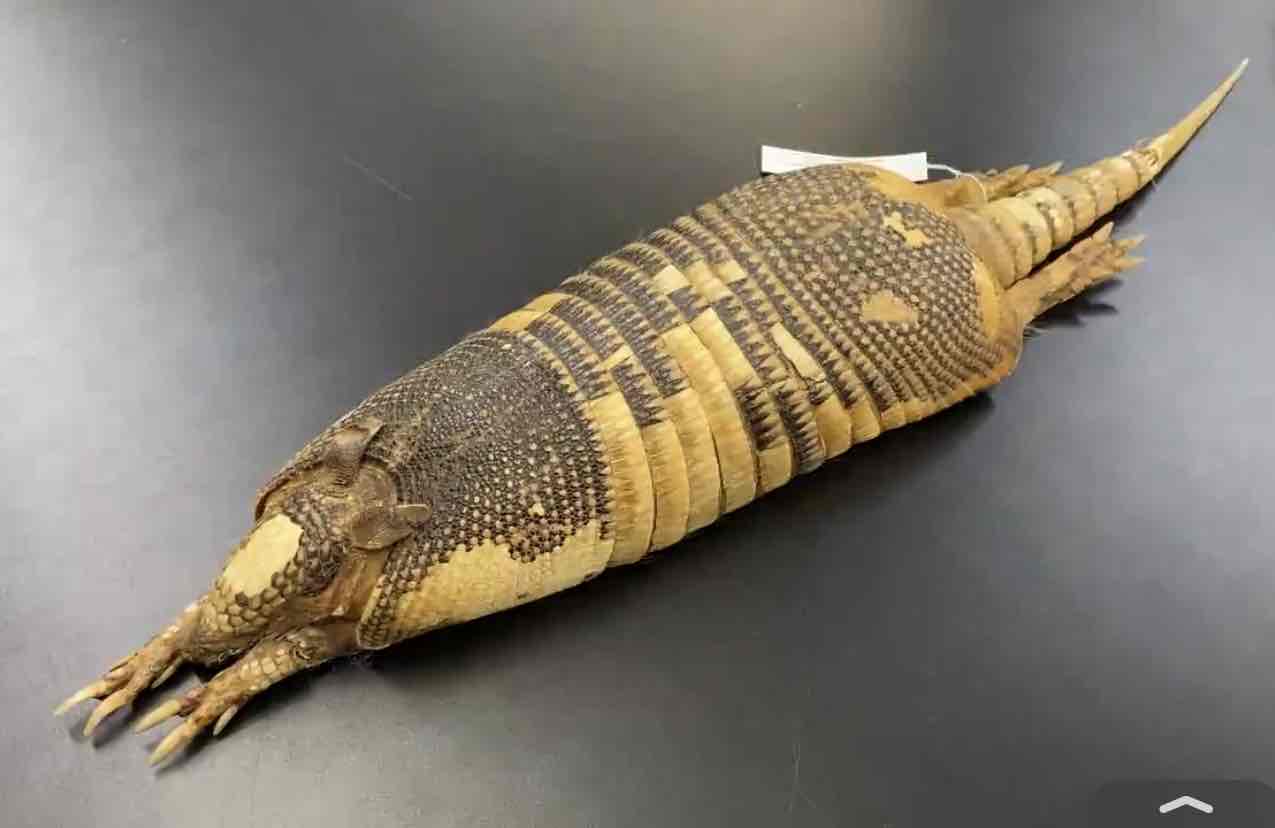
Lepus californicus
Order Lagomorpha
fam- Leporidae
Large and long eared with a black patch at the tip of the ear. upperparts dark and sprinkled with black, underparts lighter and buffy. top of tail with a black stripe that extends onto the rump. herbivorous, feeding on crops, cactus, sagebrush, mesquite, and grasses/ herbs. UPPER INCISSORS.
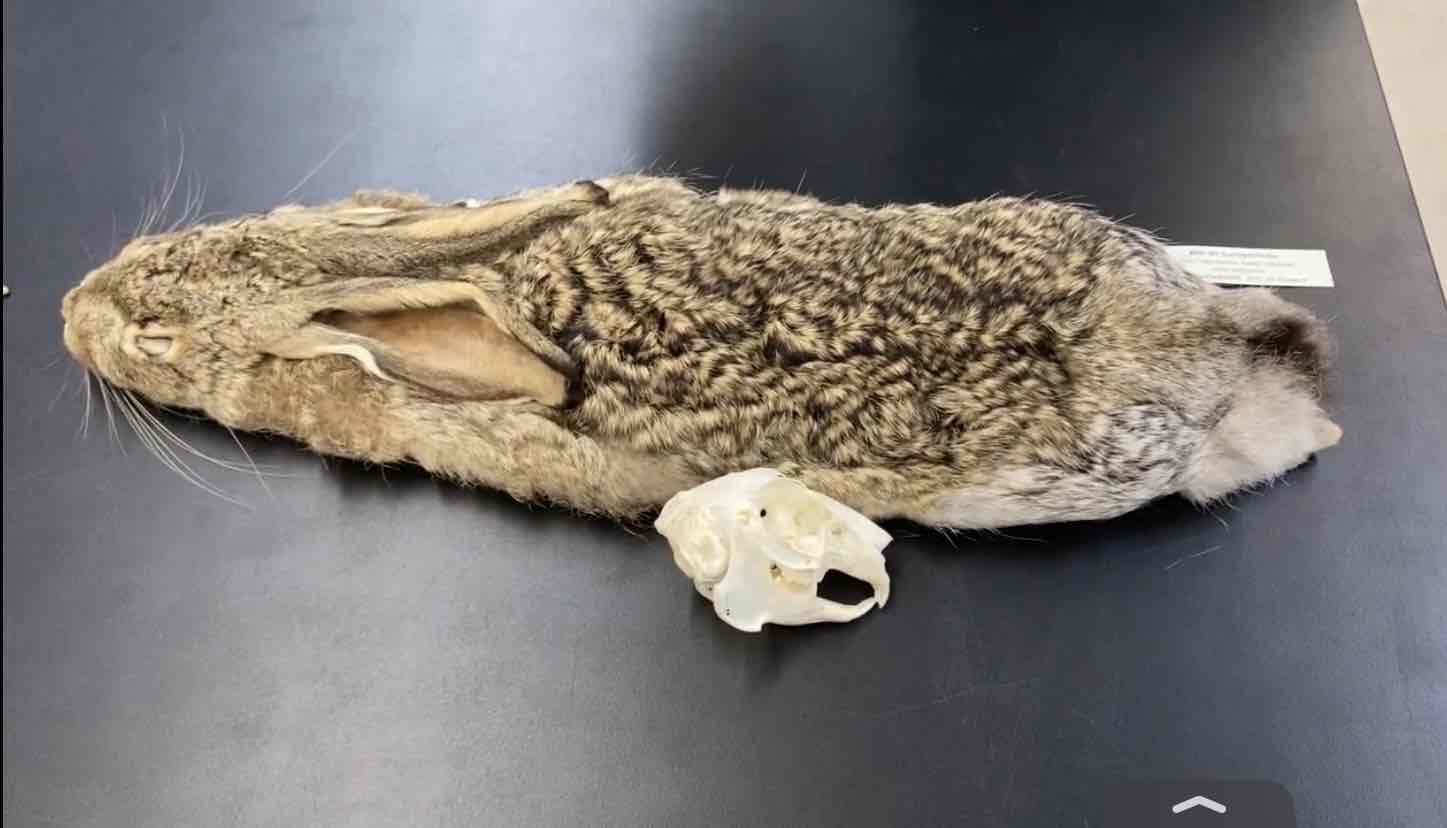
Sciurus carolinensis
Order- Rodentia
fam- Sciuridae
medium sized. upperparts gray to yellowish, rusty limbs, sides of neck and sides of rumb with gray tipped or white tipped hairs. hairs of tail yellow at base, then black, then tipped with white. underparts white and ears with noticeable white spot at the base in winter. primarily herbivorous with their mainstay bein mast from oaks (acorns). also feed on grapes, fungi, leaf buds, sedges, grass, larval and adult insects, and amphibians. Diurnal.
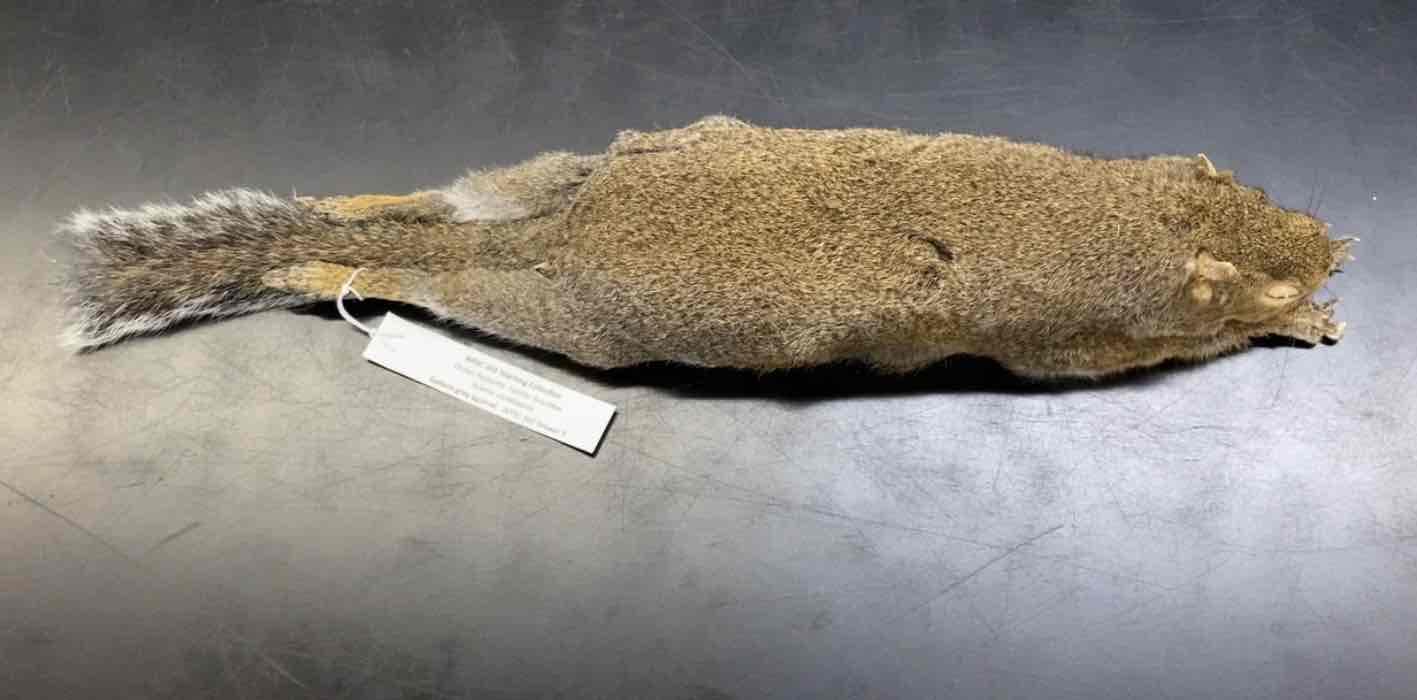
Geomys breviceps
Order- Rodentia
fam- Geomyidae
generally samll with a polygamous mating system. breeding is restricted to nearest neighbors. fossorial bodies are strikingly modified for digging and living in burrows. the skulls of pocket gophers also reflect their fossorial habits. they are massively built, flattened in profile, and angular in overall appearance. they have massive incissors. the premolars are large and 8 shaped. all teeth are ever growing.
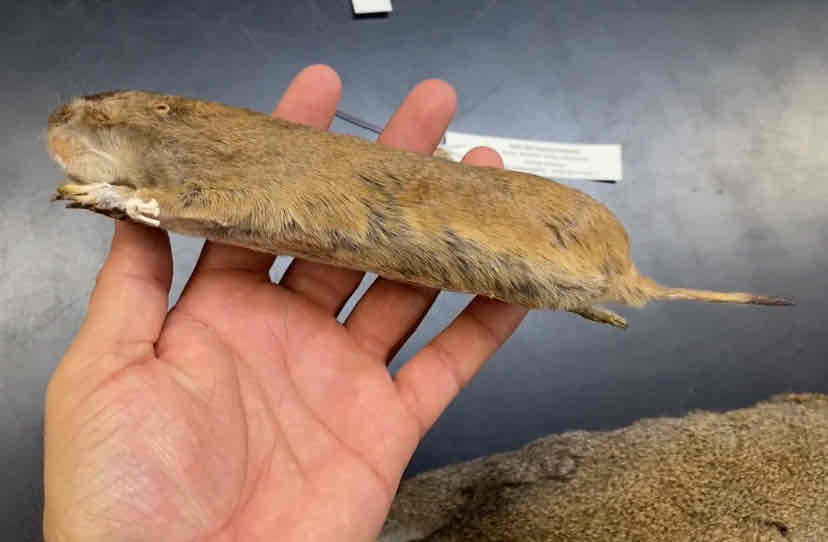
Dipodomys merriami
order- Rodentia
fam- heteromyidae
all heteromyids have a large, furlined cheek puch that opens next to the mouth and extends backwards. small and buffy colored. tail long with a dusky tip. dorsal and ventral stripes normally present. dark facial markings. underparts white. pelage generally silky. hind feet large with four toes. somewhat of a generalist compared to other dipodomys species. herbivorous diet consists almost solely of seeds. skull large with auditory bullae. nocturnal.
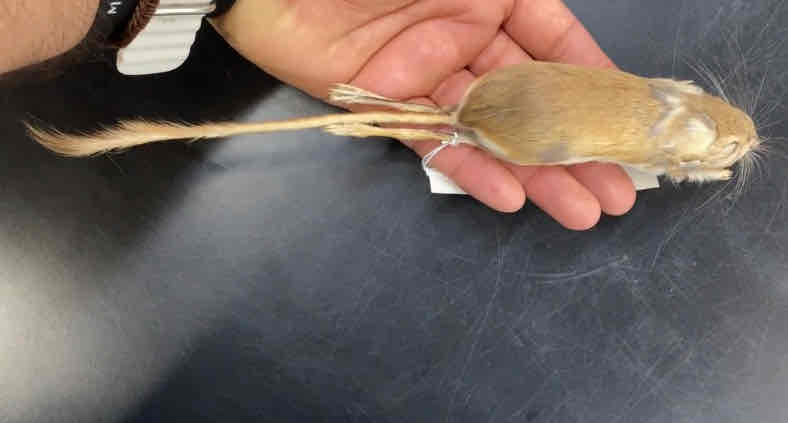
Castor canadensis
Order- Rodentia
fam- castoridae
large. water helps reduce heat loss. beavers achieve insulation by a pelage that consists of long overfur and dense underfur. they have large webbed hind feet and a moderately long but flattened tail. they have a strong built skull with a relatively flat profile. their incissors are heavy, cheek teeth do not continue growing and the occlusal surface of the cheech teeth has numerous transverse folds, wich provide cutting edges for slicing and tearing food. herbivorous.
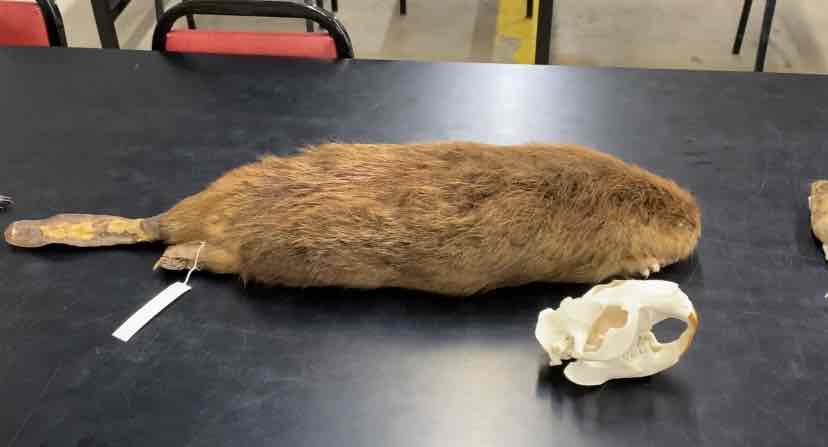
Sigmodon hispidus
order- rodentia
fam- Cricetidae
large and robust. pelage coarse and grizzled, black guard hairs stiff. tail short, sparsely haired. ears small, black or gray. hind feet with six planta tubercles, 3 middle toes longer than the outer 2 toes. Normally inhabits tall grass areas. primarily nocturnal and herbivorous.
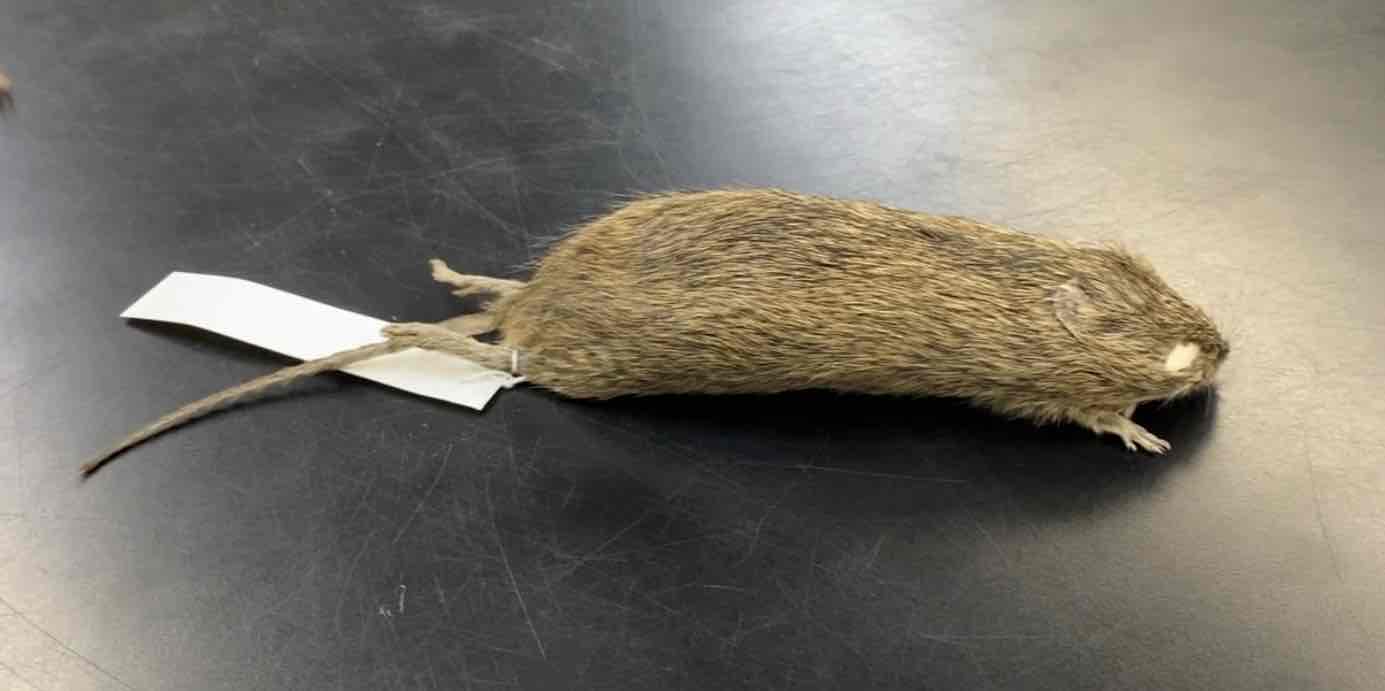
Chaetodipus hispidus
order- Rodentia
fam- Muridae
one of the largest pocket mice. pelage bristley, yellowish \, intersed with black hairs on back. belly white. granivores, diet consists of primarily seeds. may also consume insects and leaves.
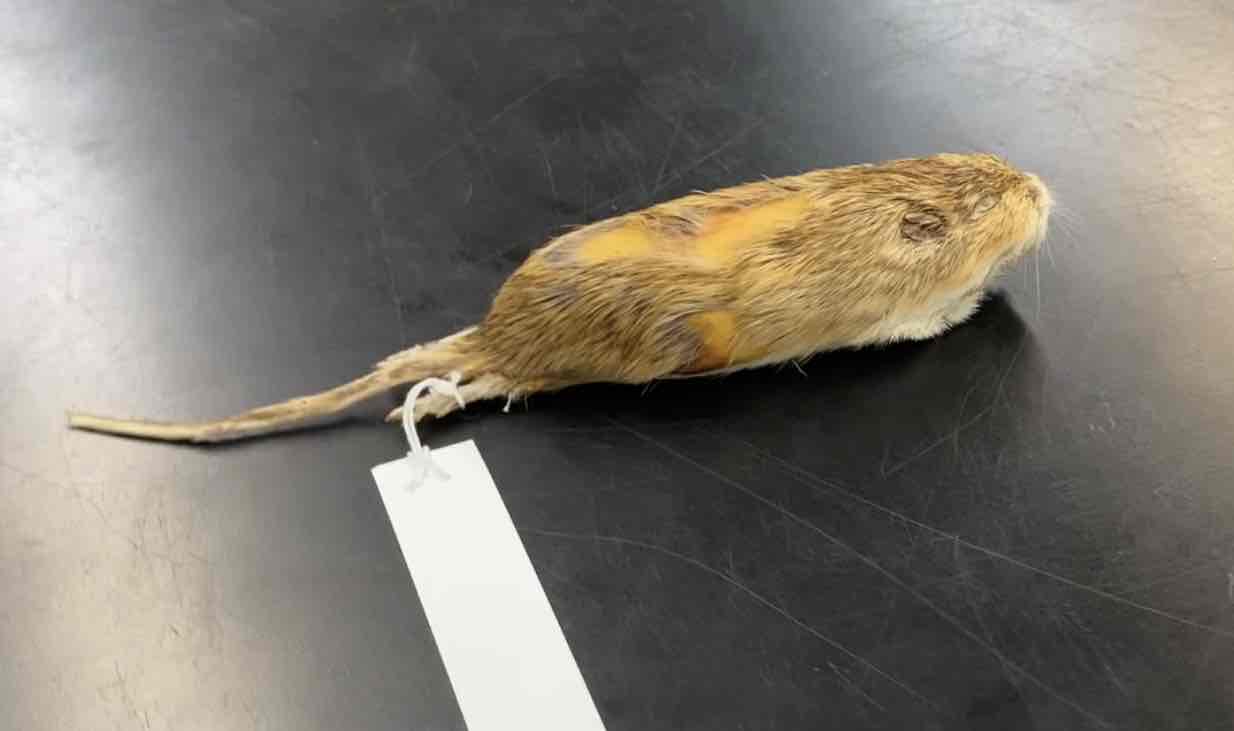
Myocastor coypus
Order- Rodentia
fam- Myocastoridae
monotypic species, large rodents. robust body for aquatic lifestyle. ears and eyes are small. large webbed hind feet with 5 toes. four toes on forefeet which lack webbing. all toes have well developed claws. tail is long, scantily furred, and rounded. it is not compressed as in beavers or muskrats. thick soft underfur overlain with long and coarse guard hairs. color is dark dorsally and whitish yellow on the underside. the cranium is massively built, with well developed ridges and a deep rostrum. the incissors are massive and chissel like. deeply orange in color. nocturnal. diet of aquatic and semiaquatic vegetation. will also feed on animal matter,
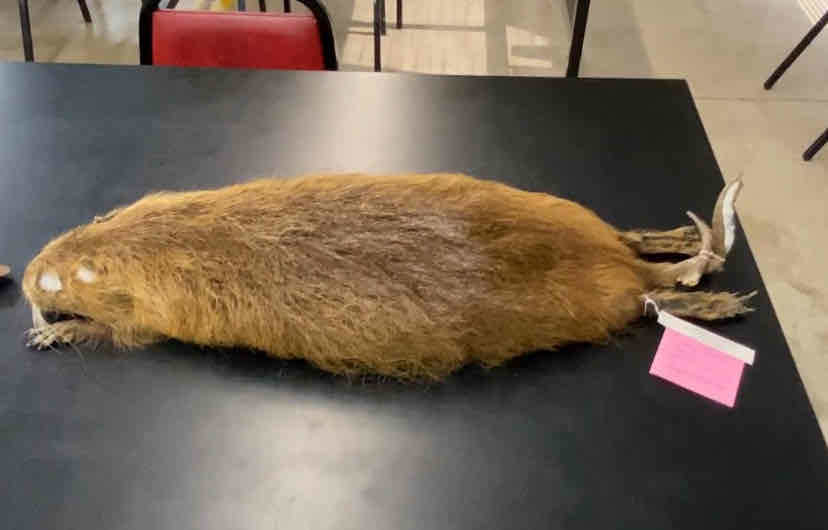
Tursiops truncatus
Order- Cetacea
Fam- Delphinidae
Stout and short beaked. distinctive head shape. the forehead appears to bulge over the beal like rostrum due to the presence of a lens shaped fatty deposit called a melon. fusiform, sleek body form. dorsal fin high, pectoral fin broad at base. upperparts gray, tinged with purple, sides pale gray, belly white. 23 upper and 23 lower teeth. the teeth are peg like, circular in cross section. generally carnivorous.
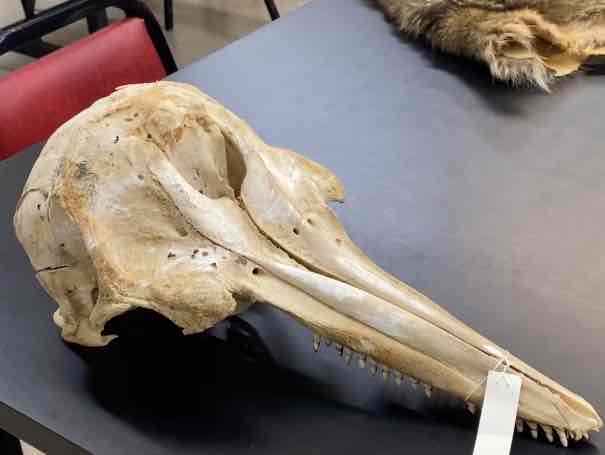
Canis latrans
Order- Carnivora
fam- Canidae
med sized carnivore. slender with small feet narrow muzzle relatively long tail. colors usually paler than wolves. upperparts grizzled buffy and grayish overlaid with black. muzzle ears and outer edges of legs yellowish buff, tail with black tip. primarily carnivorous. will eat a variety of foods.
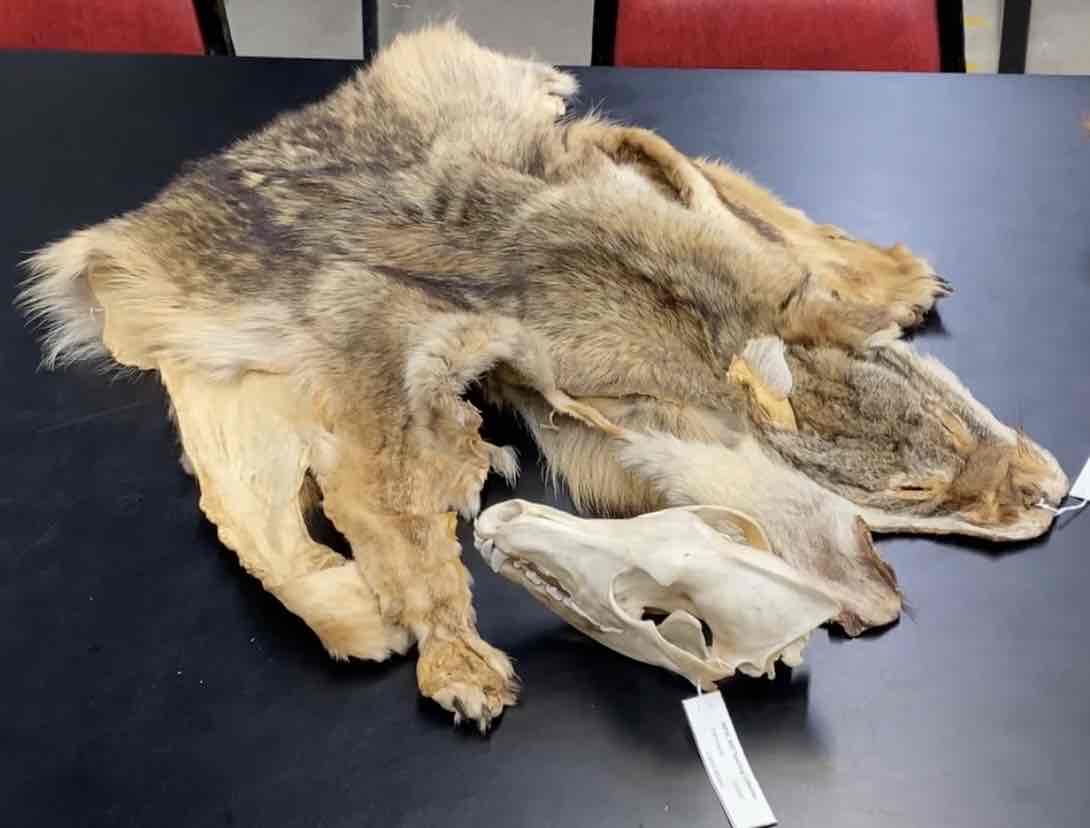
Ursus americanus
Order- Carnivora
Fam- Ursidae
med sized bear. have small rounded ears. small eyes. and very short tails. most spp have long rough fur and hairs that make it up are generally unicolored. skulls are massive elongates with unspecialized incissors. elongated canines and slightly hooked reduced premolars. the carnassials are flattened and specialized for crushing posses robust, recurved. non retractible claws that they use for climbing digging and ripping. food varies. omnivorous.
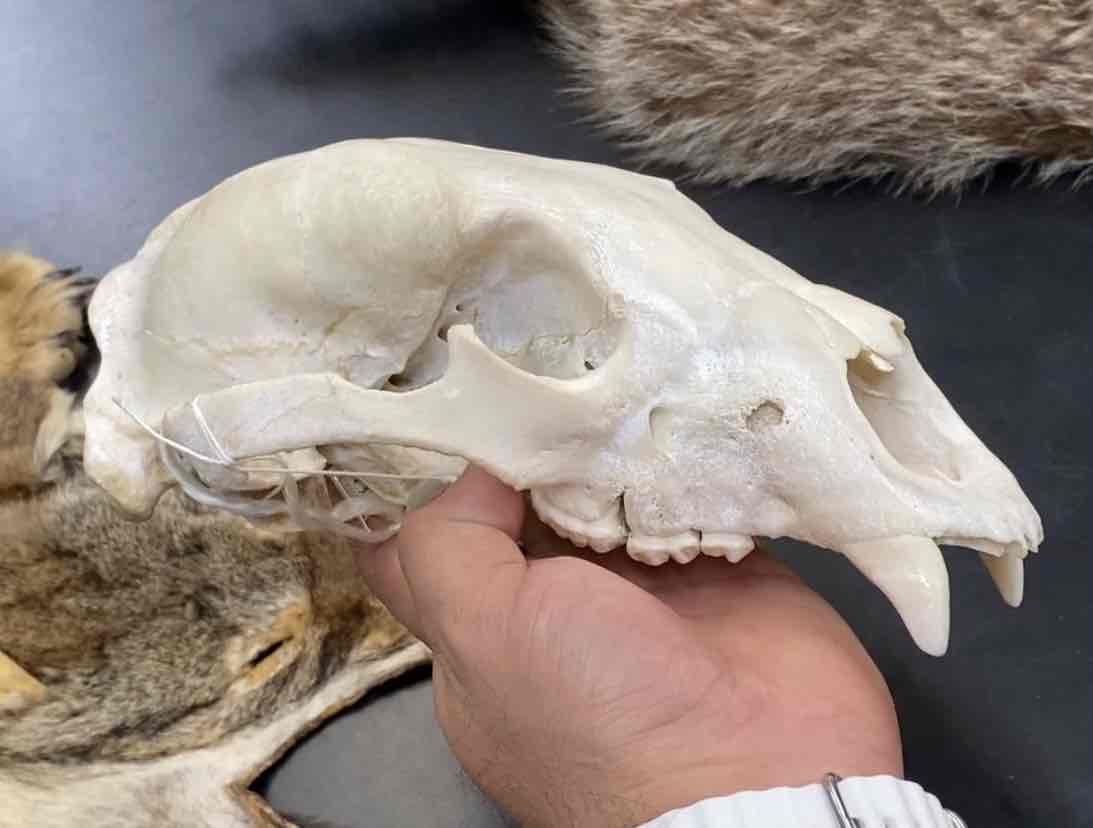
Procyon lotor
Order- Carnivora
fam- Procyonidae
med sized carnivore. distinctive blackish facial mask outlined with white. tail long nad alternating black and buff rings. tip of tail black. their incissors are unspecialized and their canines are moderately long and ovate in cross section. the molars are wide and lack sharp canassials. nocturnal and omnivorous.
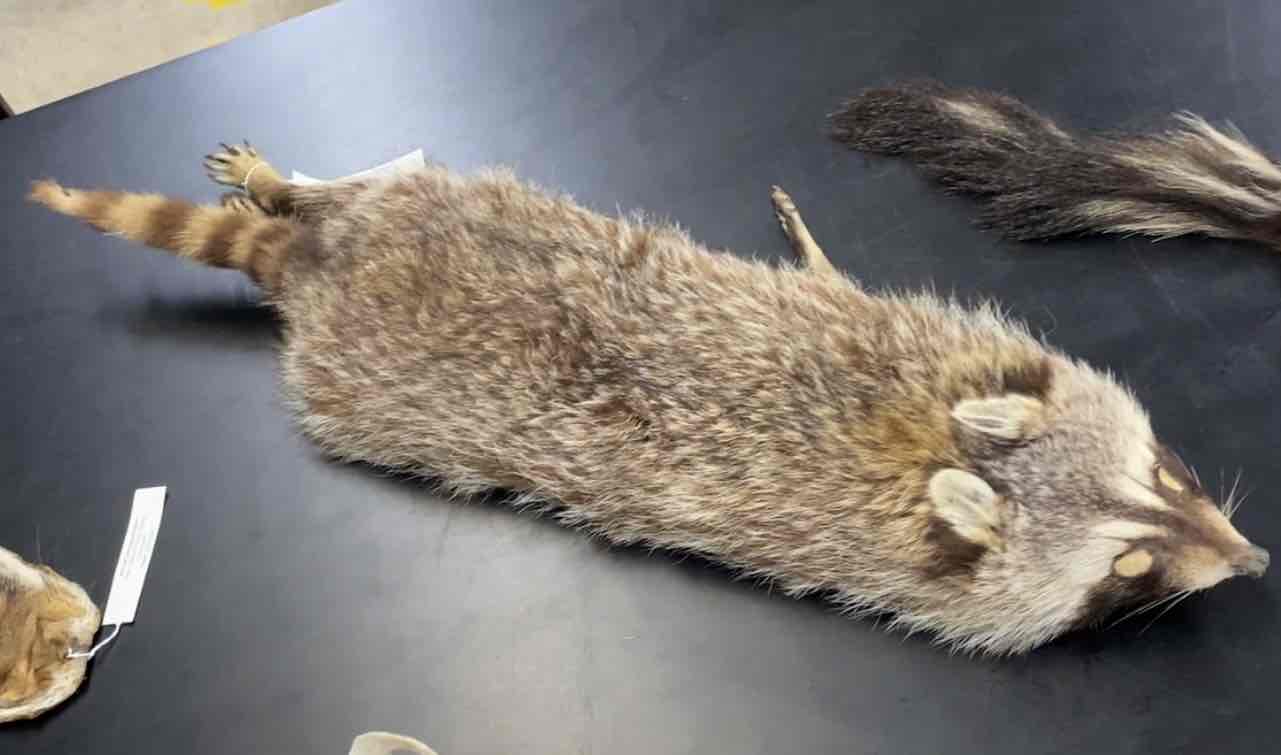
Lantra canadensis
Order- Carnivora
fam- Mustelidae
Med sized carnivore. dark brown with long slender body and long thick tapering tail. webbed feet. short neck and broad head. legs short. pelage short and dense. upperparts rich glossy dark brown. carnivores.
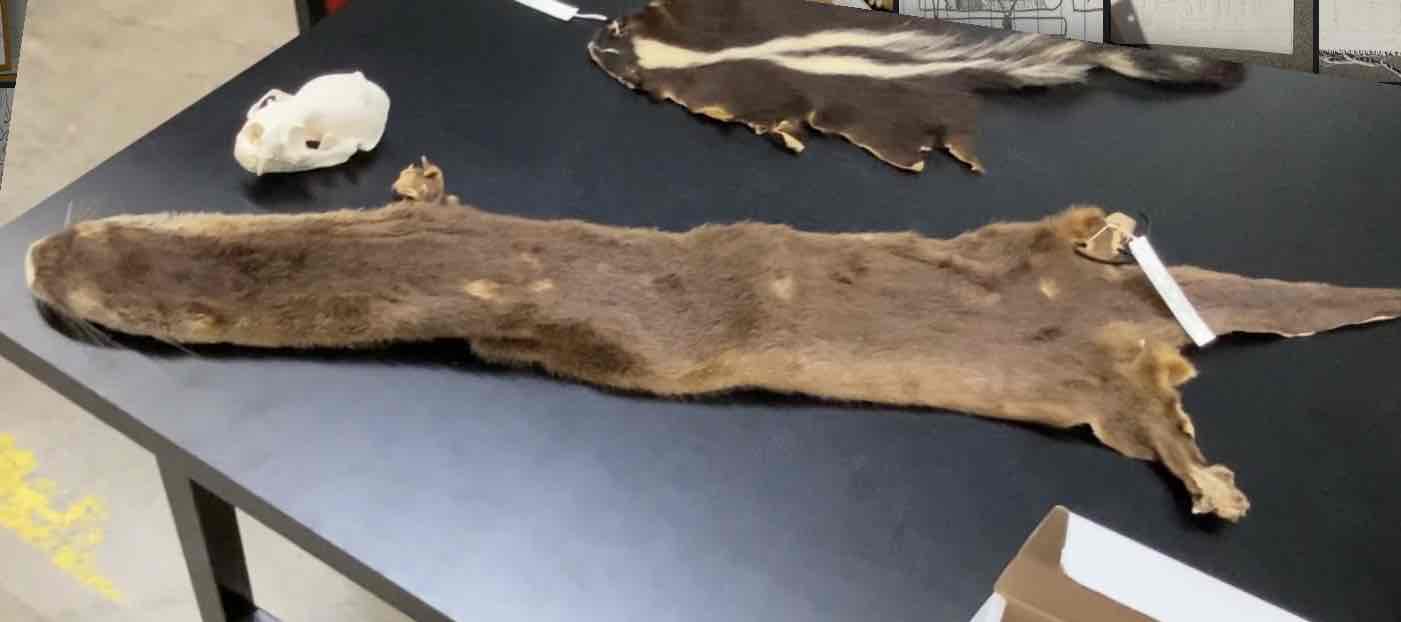
Mephitis mephitis
Order- Carnivora
Fam- Mephitidae
med sized carnivore. tout bodied with two white stipes on the side of the back that join eachother in the neck region and extend onto the head and tail. large scent glands on each side on the anus. ears short and rounded. eyes small. pelage long, coarse, and oily. nocturnal.
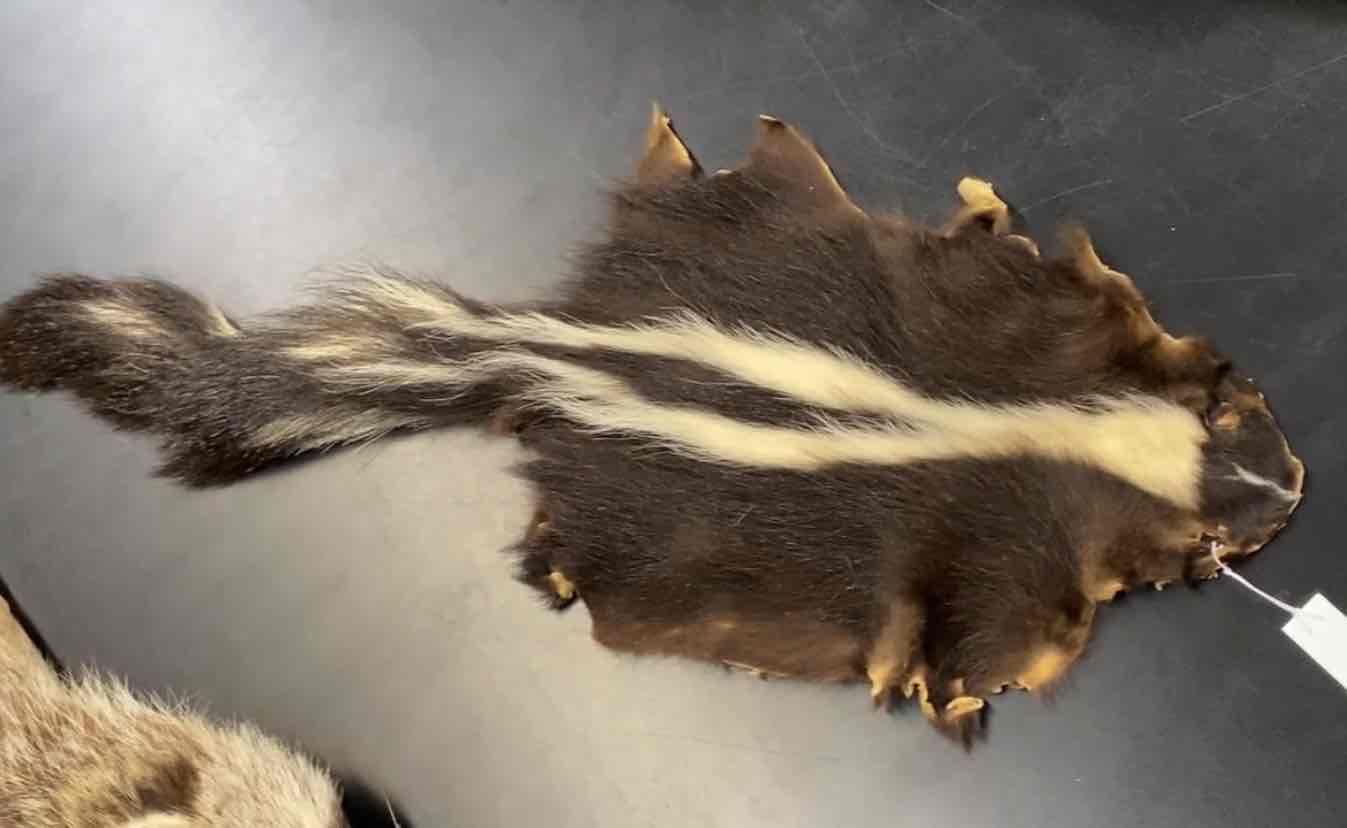
Lynx rufus
Order- Carnivora
Fam- Felidae
med sized. upperparts reddish brown streaked with black. underparts whitish and spotted with black. back of ears black rimmed and white in the center. Ears slightly is tufted. fur on sides of head long. short tail. tip black above and white below. skull has short rostrum large bullae that are divided by a septum. dentition is reduced. shortened jaw results in increased force at the bite point. incissors small and chisel like. upper canine is larger thant the lower. simple molar, carnassials well developed and cheek teeth are exclusively for shearing. retractable claws, digitigrade. they rely on sight. relatively large eyes. also have good smell and hearing senses.
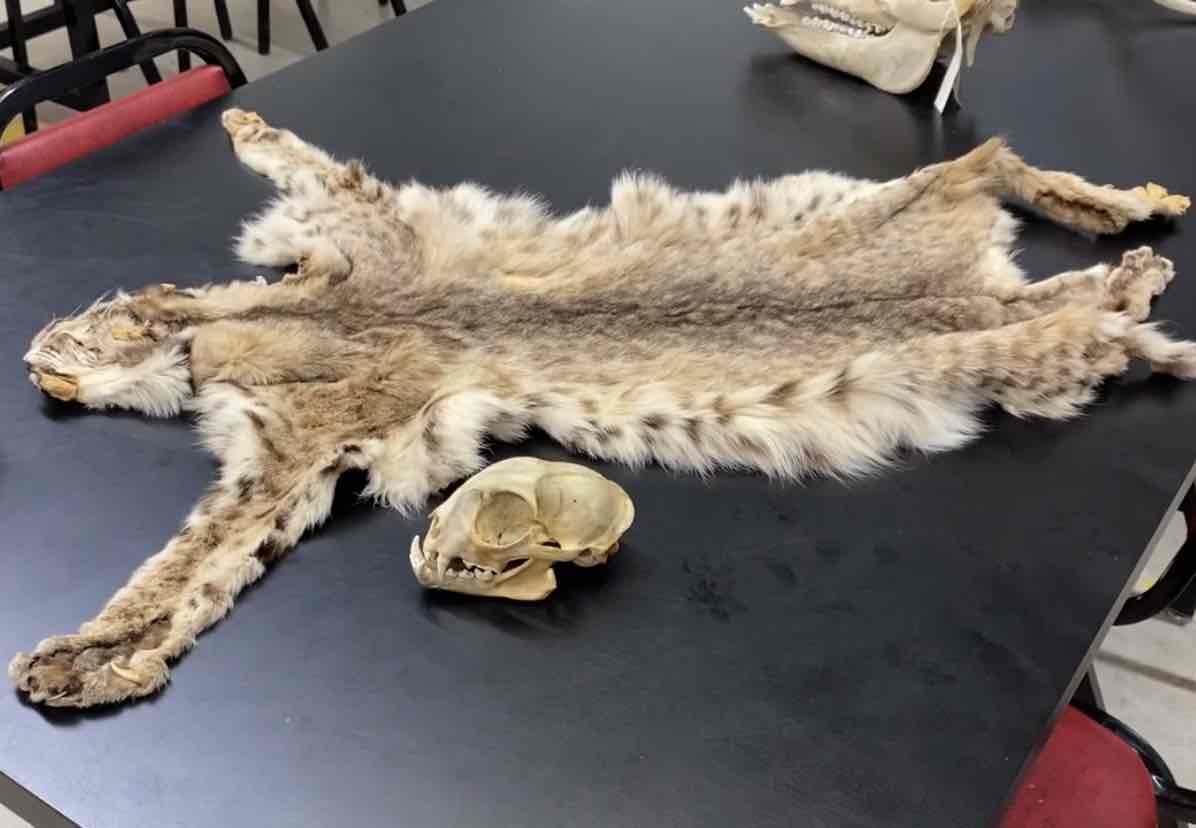
Sus scrofa
Order- Artiodactyla
Fam- Suidae
eyes small and located high on skull. ears small and pointed. the skull is elongated with flat dorsal profile. mobile snout which has a cartilagenous disk at its tip and terminal nostrils. skull with prominent occipital crest that is formed from the supraoccipital and parietal bones. all four digits have hooves but these are only functional in locomotion on the middle digits. upper incissors decrease in size laterally. the lower incissors are long narrow and set at a low angle in the jaw. upper canines grow out and back into large curved tusks. wear between upper and lower canines produce sharp edges. the upper canines are ever growing .omnivorous.
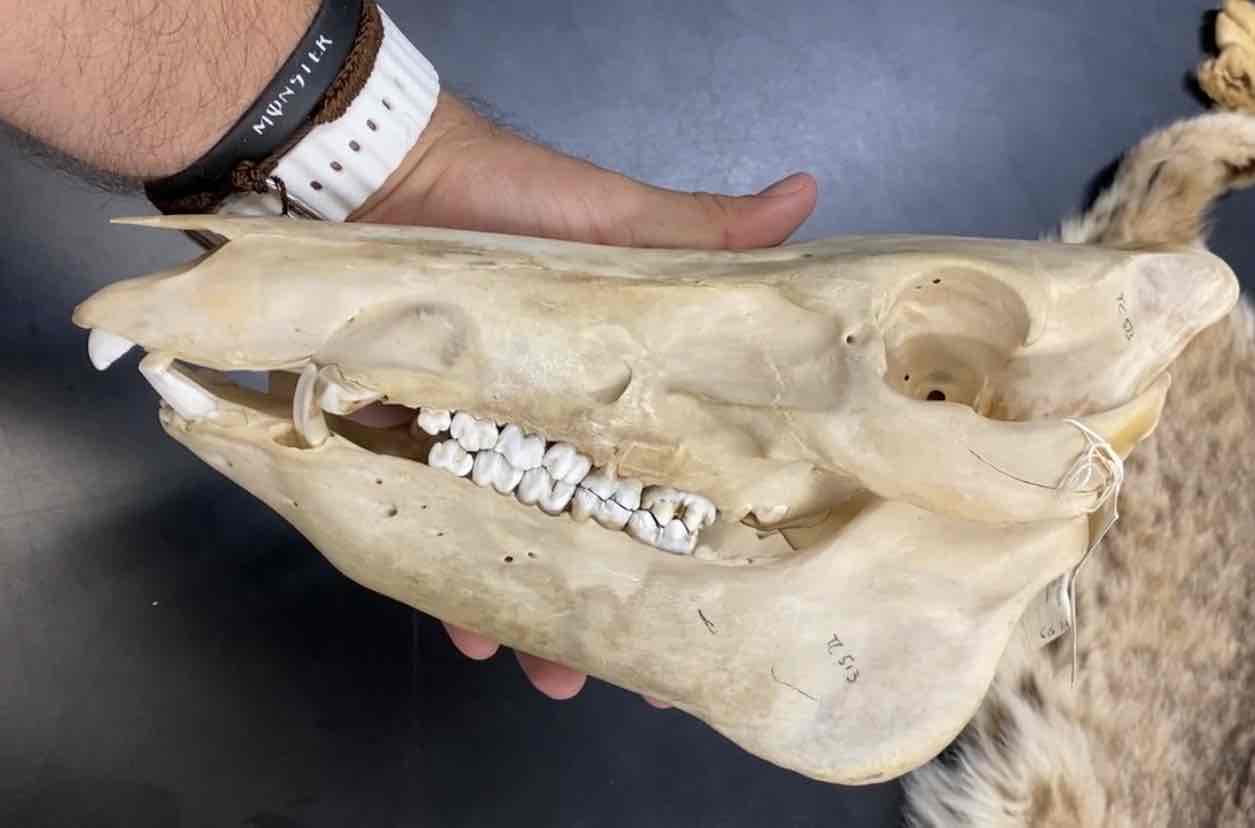
Odocoileus virginianus
Order- Artiodactyla
Fam- Cervidae
relatively small deer with short ears. tail broad basaly and white underneath. all major points of the antlers come off the main beam. antlers are made of bone. they arise from a permanent bony base on the frontals called a pedicel. upper incissors absent. in the lower jaw, three incissors are present on each side. and are joined by an incissor like canine. posses a postorbita bar, lack sagittal crest. posess 4 toes on each foot. four chambered stomach. herbivorous.
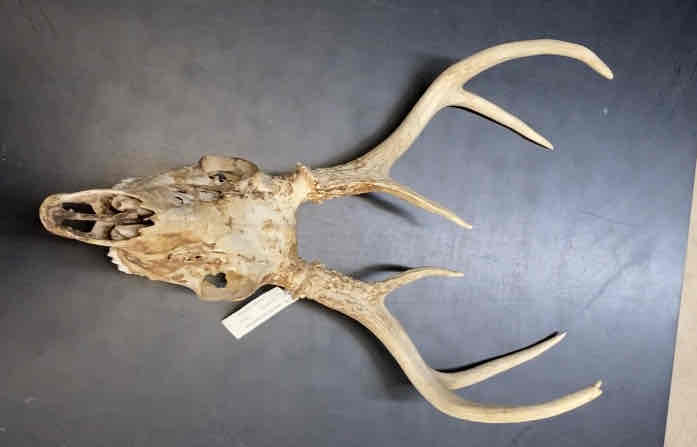
Antilocapra americana
Order- Artiodactyla
Fam- Antilocapridae
small to med sized. horns pronged and reach beyon the tips of the ears in males. bony horns covered in keratinous sheath. postorbital bar present and complete. the orbits are large and placed far back on the skull. behind the level of the last molar. cheek teeth hypsodont, slenodont. the upper incissors are replaced by a horny pad. and the lower canine incissor like. Diurnal and herbivorous.
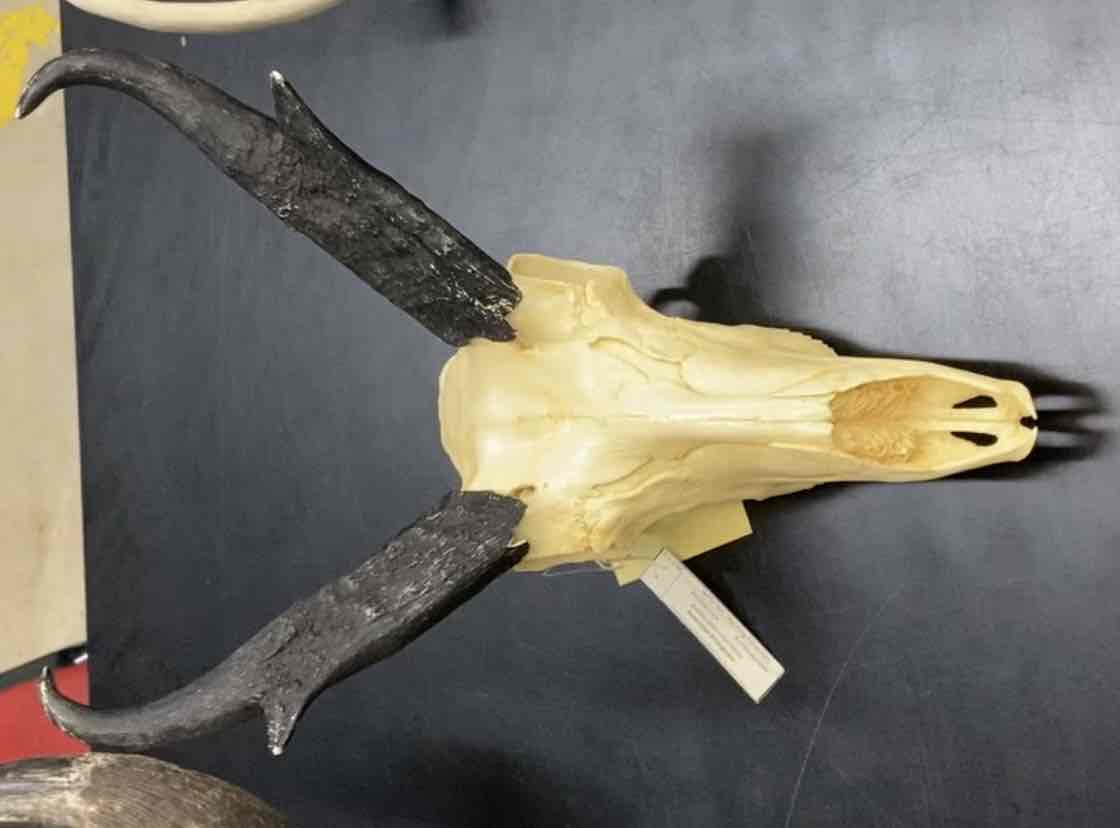
Bos bison
Order- Artiodactyla
Fam- Bovidae
large with distinct hump in the shoulder region. head neck shoulders and forelegs with long shaggy hair. hind parts of body with short hair. hairs short and curved covered in keratinous sheath. four chambered stomachs and digest cellulose through bacterial fermentation. postorbital bar at rear of orbit. pits in front of the orbits are often present. cheek teeth hypsodont and selenodont. upper incissors are absent. on the lower jaw, three incissors are present on each side of the jaw. and in addition the canines are modified to ressemble additional pair of incissors. missing on upper jaw.
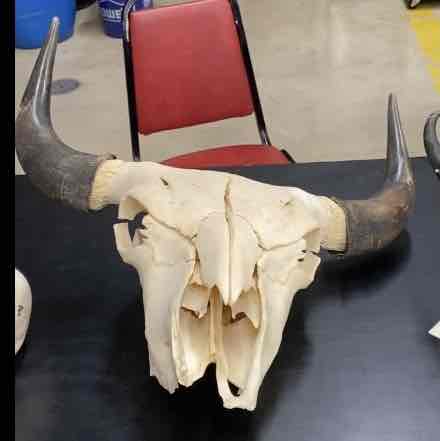
Homo sapiens
Order- primates
fam- Hominidae
large braincase. most with prominent face and prognathus jaw. nostrils close together and facing forward and downward. tooth rows form rounded arches. upper molars quadrate and bunodont. lowers are bunodont and have a hypoconulid. omnivorous
